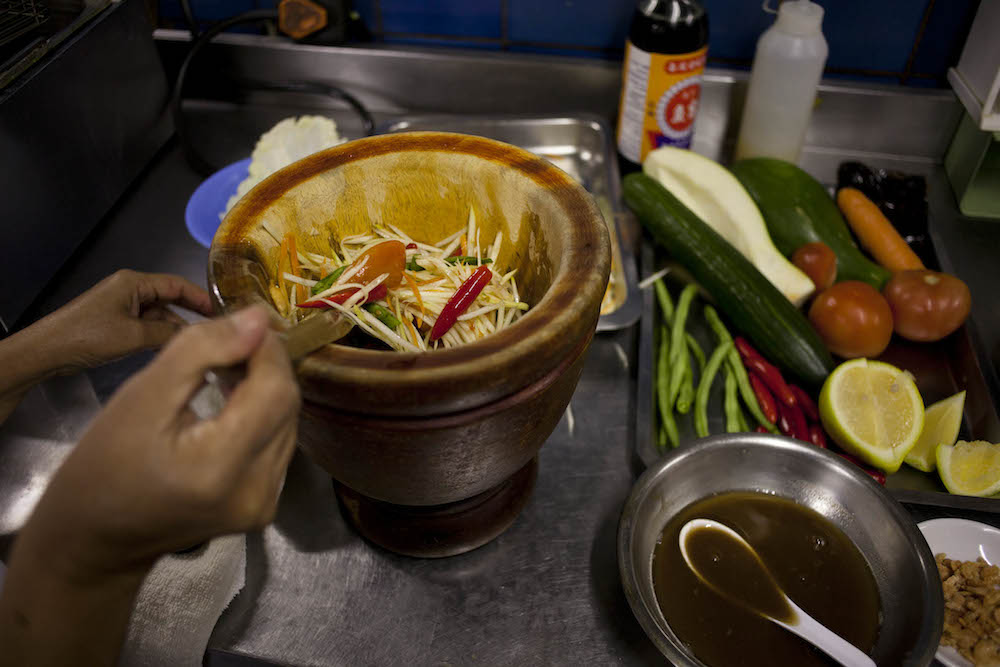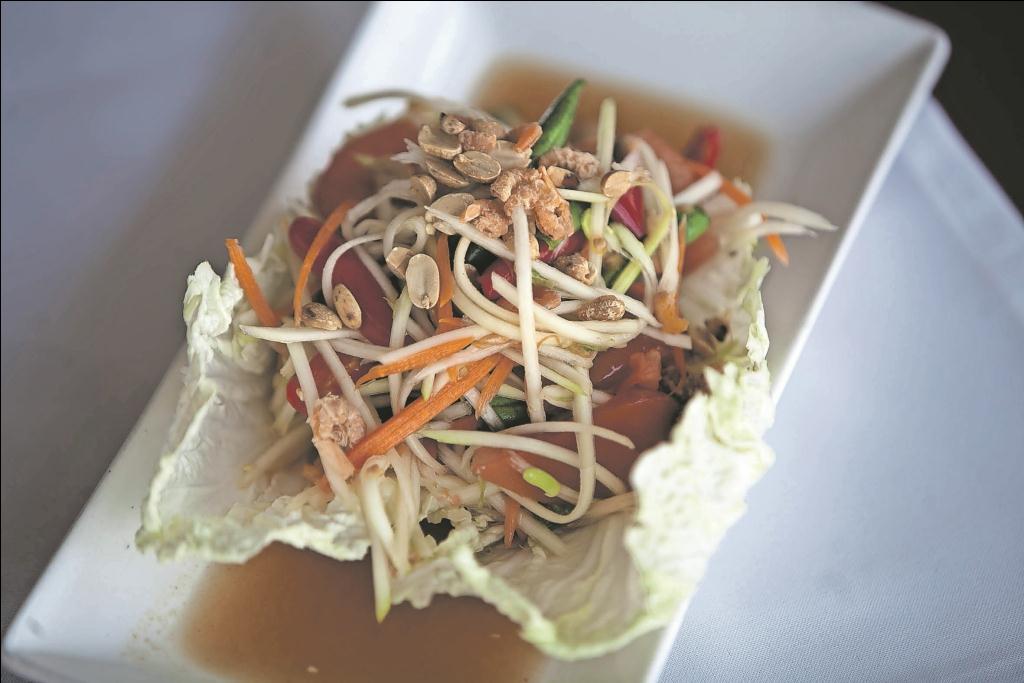According to Micky Lui
Micky Liu, the diminutive proprietor of the Sai Thai restaurant in Cyrildene, squats down in her kitchen and shows me how she remembers women slicing papaya in Thailand. Liu comes from Surin in east Thailand, close to the border with Cambodia, and says she used to eat papaya salad every day. When she started her restaurant in Johannesburg 11 years ago, there were only four items on the menu: spring rolls, tom yum, pork ribs and papaya salad.
“If you go to any restaurant you can’t have papaya salad. This dish reminds me of home.”
Papaya salad apparently originated in Laos, over the border with Thailand, and is now a staple in Southeast Asia. In Thailand it is known as som tum, which, according to Liu, means “sour” and “pounding”.

In Thailand the dish is often found on the menus of street-food vendors, in part because it can be prepared so rapidly. At a “floating market” in Bangkok, women moor their small boats piled high with ingredients for the salad next to the quay, and pass plates up to diners.
At Suan Supatra Land, a giant orchard and farm near Rayong on the east coast, I recently watched an expert in action. The cook scoops three cloves of garlic out of a plastic container on the counter and drops them into a giant wooden mortar in front of her. Immediately she sets to pounding them with a large wooden pestle, producing a ringing sound.
Everything now happens very quickly: she reaches over and drops in three red chillies – more pounding – then a ladleful of green beans and another of roasted peanuts. Then some chunky slices of tomato, a spoonful of dried shrimp and another of palm sugar paste, lime juice and fish sauce.
There is now more liquid in the bowl and the ingredients have begun to break down, producing a watery sound as she pounds away. All that is left is to spoon in the pale green papaya strips, and toss it in the amber liquid.
This has all taken precisely a minute. The servers, of which there are four or five, say they make up to 300 papaya salads every day.
Papaya (Carica papaya) is confusingly often referred to as pawpaw or papaw (Asimina triloba), a completely different fruit also known as a custard apple.

Papaya is usually served very ripe, the seeds black and bitter like pepper, the flesh deep orange. For the salad you’ll need to find an unripe one with a deep green skin, its flesh pure white or perhaps very pale green. In an unripe papaya the seeds are also white and must be scooped out. The fruit is then peeled and cut vertically into four.
Back in her small kitchen, Liu shows me how to get those perfectly even strips. There are two ways – you hold the papaya with your left hand and then draw a julienne peeler over the flesh, producing the perfectly formed strips.
The other way needs more practice: again holding the piece in your left hand, you firmly but gently chop into the flesh with a very sharp cleaver, producing a series of regularly spaced incisions. You then cut down across the grooves, again producing the strips. This looks easier than it is, and using the peeler is probably easier.
This is a salad you can serve with steamed rice and fried fish. It is impossibly fresh and pulls your taste buds in different directions. It’s sweet from the palm sugar and has a tremendous kick from the crushed chilli; the chewy shrimp and peanut add interesting texture. Beneath all this is the papaya, which sucks up the flavour and cools everything down. Even through the tears, you can’t stop eating.